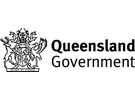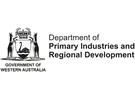Producers in the Queensland Murray Darling Basin area are being encouraged to establish new, high value, profitable and resilient horticulture value chains, with grants of up to $100,000 being made available.
"This is part of the Murray Darling Basin Regional Economic Diversification Program (MDBREDP), and centres on further expanding horticulture in the region,” Minister for Agricultural Industry Development and Fisheries Mark Furner said. “While the major crops in the area have traditionally been cotton and grain, the soils and climate provide promising conditions for a wider range of horticulture, which in turn leads to more employment opportunities.”
In addition, a new Industry Development Officer based in Goondiwindi, Gianluca Luongo, has been appointed to work closely with local growers and agronomists to further assess the potential of promising new horticulture crops across the region, including tree crops such as Pecans, Jujubes and a range of annual crops with market potential.
“There is $450,000 in competitive grants available for regional agribusinesses to help develop new horticulture industries,” Mr Furner said. “Applications open for the co-investment funding scheme opened this week and will provide direct financial support to farm and post farm gate businesses keen to expand their current operations into new crops.”
Applications close 22 February 2019, and must include details of the project and demonstrate the economic benefits for the region, with consideration for greater funding given to significant regional projects.
Meanwhile, horticultural producers on the Granite Belt will be better represented, after growers came together to establish the industry’s newest association: the Granite Belt Growers Association (GBGA). The local industry formed the association to be on the front foot when it comes to publicity and policy change.
The inaugural AGM was held in late November in Stanthorpe, where the group voted to incorporate and accept the model rules for the association. Stanthorpe grower Angus Ferrier was appointed president of the association and is strongly committed to representing the interests of its members as a unified voice for horticulture growers in the region.
In Western Australia, horticulture production on the Gascoyne River is set to expand, with a new land release for agricultural development - generating growth and jobs in the region.
Stage One of the land release comprises two lots totalling 20 hectares, while a further 280 hectares is expected to be released in 2019 - significantly increasing fresh produce supplies from the region.
"This development on the banks of the Gascoyne River opens the door to increased production and potential export opportunities, which will stimulate economic development and employment in the region and beyond," Agriculture and Food Minister Alannah MacTiernan said. "This is a small start, but we are keen to get more land onto the market as soon as possible. We look forward to seeing horticultural expansion unfold on the Gascoyne River, adding to the 45,000 tonnes of produce that comes out of the region, worth about $97 million per annum."
The land release is the culmination of the Gascoyne Food Bowl Initiative, which identified a total of 400 hectares of high value land suitable for horticulture cultivation, backed by reliable and effective water and power supplies. The initiative secured a new borefield and built a 25 kilometre-long pipeline to deliver guaranteed high-quality water to the expansion area, installed four sand spears to harvest free water when the river flows and a new electric power supply to operate water pumps.
"Much work has gone into getting here, including drilling 120 exploration bores, resulting in 35 production bores suitable for irrigation, delivering an additional four gigalitres of water to the irrigation district - providing investors with confidence in a sustainable water resource," Ms MacTiernan said. "The new 22,000 volt power line will deliver electricity to the expansion area to power the water pumps, which is more efficient, reliable and cheaper than diesel, while four innovative sand spears will reduce growers' reliance on aquifer supplies and operating costs."

For more information on MDBREDP grants visit: www.business.qld.gov.au/murray-darling-grants
F or more information about Stage One of the Gascoyne Food Bowl Initiative land release and expression of interest visit: www.agric.wa.gov.au/r4r/gascoyne-food-bowl-initiative
or more information about Stage One of the Gascoyne Food Bowl Initiative land release and expression of interest visit: www.agric.wa.gov.au/r4r/gascoyne-food-bowl-initiative
